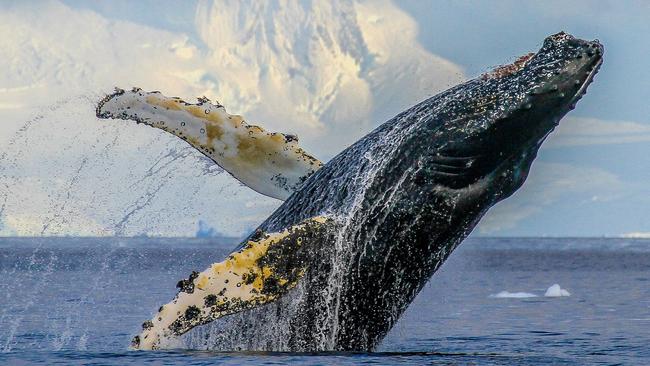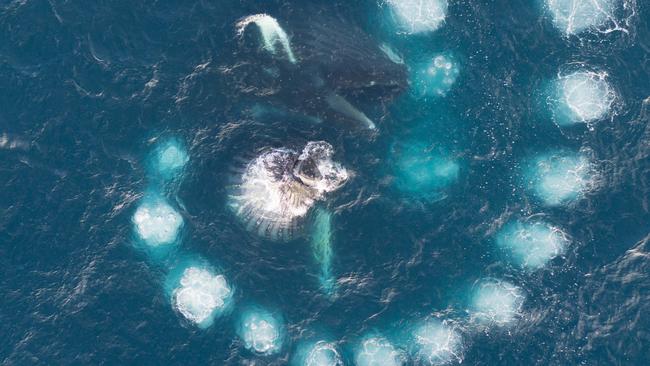Whale pregnancies linked to Antarctic krill stocks, say researchers
Humpback pregnancies plummet after krill stocks are reduced, landmark new research has revealed, sparking global calls for tighter regulation of Antarctic fishing.

Humpback whale pregnancies plummet after krill stocks are reduced, research has revealed, sparking global calls for tighter regulation of rapidly expanding Antarctic krill fishing.
The groundbreaking research, conducted off the Western Antarctic Peninsula over eight years and published by 17 researchers worldwide, shows reductions in krill – due to melting sea ice and “likely” also fishing – result in sharp declines in humpback pregnancies.
“This is significant because until now, it was thought that krill were essentially an unlimited food source for whales in the Antarctic,” said lead research author Logan Pallin, of the University of California, Santa Cruz.
“Continued warming and increased fishing along the WAP (Western Antarctic Peninsula), which continue to reduce krill stocks, will likely impact this humpback whale population and other krill predators in the region.

“This information is critical, as we can now be proactive about managing how, when and how much krill is taken from the Antarctic Peninsula. In years of poor krill recruitment, we should not compound this by removing krill from critical foraging areas for baleen whales.”
Regulation of krill fishing in Antarctica is a hot-button issue, with the fishery rapidly expanding and increasingly using industrial super-trawlers, led by Norway, Russia and China.
The new research, supported by a range of science foundations, non-government and government organisations, focused on a region of the WAP important to humpback whales and krill fishers.
Australia is among the nations leading a push for new marine protected areas in Antarctic waters, while conservationists and scientists are demanding better targeted regulation of krill fishing.

These efforts, through the global Commission for the Conservation of Antarctic Marine Living Resources, have reportedly been frustrated by krill-fishing nations.
The new research found that in 2017, after a year of abundant krill, 86 per cent of humpback females in the sample group (of 669) were pregnant.
However, in 2020, following a year when krill numbers dropped, only 29 per cent of the females fell pregnant.
Researchers say humpback whales rely on the energy from krill feeding for breeding, while pregnant whales need stores of energy for gestation and lactation.
Krill abundance is linked to the extent of sea ice, which juvenile krill rely on for shelter and to feed on algae growing under the ice.

Research co-author Ari Friedlaender, of the University of California, Santa Cruz, said the WAP was experiencing rapid warming, resulting in an annual sea ice extent on average 80 days shorter than 40 years ago.
“The major problem is that CCAMLR is not including climate change information and data of foraging needs of the largest krill consumer in the management of the fishery,” Dr Friedlaender said.
Co-author and global lead of WWF’s Protecting Whales and Dolphins Initiative Chris Johnson said more precautionary and adaptive measures were needed to ensure krill predators – whales, penguins, seabirds, seals and fish – had sufficient food.
This should include new marine parks. “Krill are not an inexhaustible resource and there is a growing overlap between industrial krill fishing and whales feeding at the same time,” he said.
The krill industry pointed to data suggesting krill abundance in the fishing area had overall not changed from 2000 to 2019, while welcoming the findings of generally high whale reproductive rates.
“These results highlight the continued recovery of whales, which have sustained high reproductive rates despite natural krill variability,” said Javier Arata, of the Association of Responsible Krill harvesting companies.






To join the conversation, please log in. Don't have an account? Register
Join the conversation, you are commenting as Logout